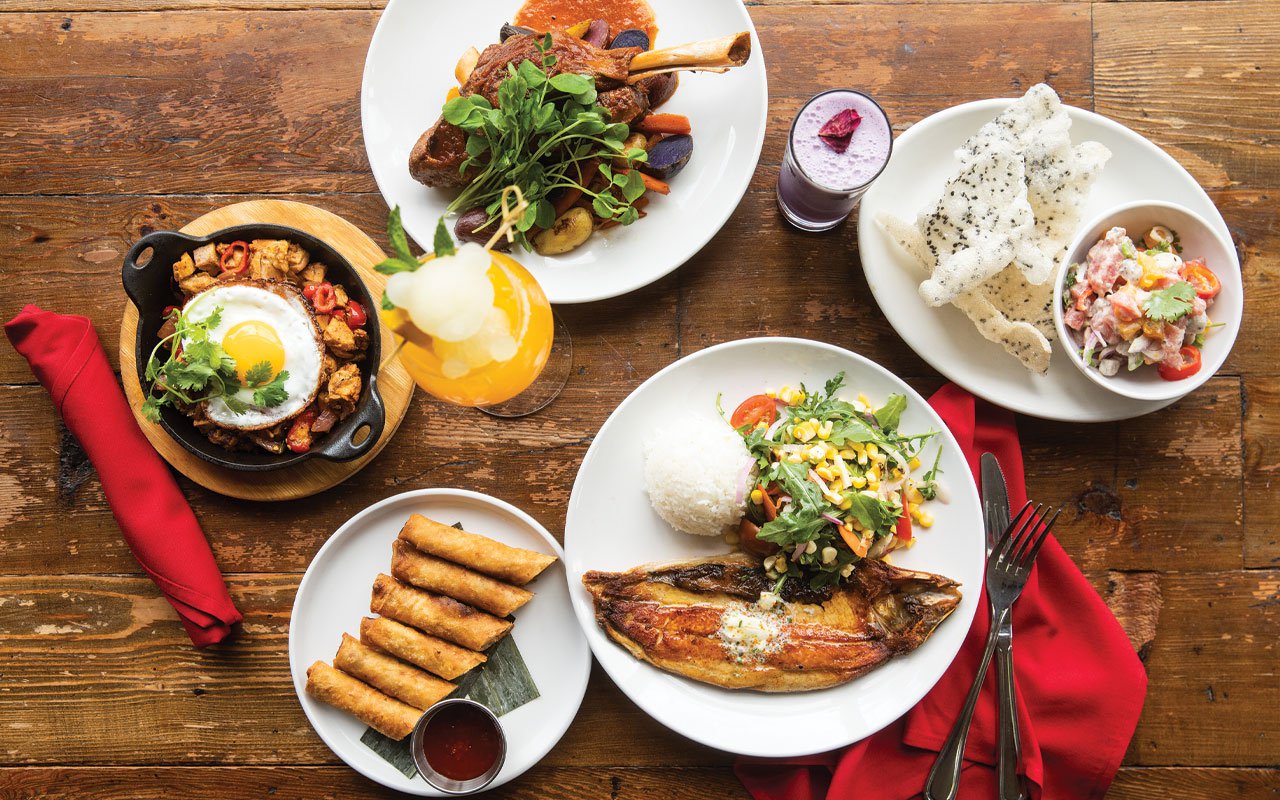
Healthy Filipino Food
Embracing the Wholesome Side of Filipino Cuisine
Dive into the heart of healthy Filipino food, and you’ll discover a tapestry of vibrant flavors deeply rooted in cultural heritage. In recent years, there’s been a burgeoning interest within the Filipino community to make healthier food choices without compromising on taste. This shift underscores an exciting revelation: traditional healthy Filipino food can indeed be both deliciously satisfying and nutritionally balanced with thoughtful preparation and ingredient selection.
The Nutritious Staples of Filipino Cooking
A. Grains and Root Crops
The cornerstone of Filipino meals, rice, is not only a symbol of sustenance but also a source of complex carbohydrates. Red or brown rice, increasingly popular whole grain alternatives, offer more fiber and nutrients than their white counterpart. Root crops like sweet potato, taro, and cassava provide energy-dense sustenance, rich in vitamins and minerals. Integrating these staples creatively into daily meals ensures a steady supply of essential nutrients for optimal health.
B. Legumes and Vegetables
Filipino cuisine boasts a colorful array of legumes and vegetables that are nutritional powerhouses. Beans, lentils, and leafy greens such as malunggay (moringa) and kangkong (water spinach), along with bitter melon, are packed with vitamins, minerals, and antioxidants. By maximizing their use in savory stews and stir-fries, we can elevate the nutritional profile of our dishes while preserving their authentic flavors.
C. Lean Protein Sources
Fish and seafood play a pivotal role in coastal Filipino diets, providing lean protein and omega-3 fatty acids crucial for heart health. For those inland, chicken and lean cuts of pork, beef, or goat meat can serve as hearty meal centerpieces. Opting for these protein sources helps maintain a balanced diet while staying true to traditional recipes.
Healthy Filipino Recipes and Cooking Techniques
A. Adobo Healthified
The classic adobo dish can undergo a transformative journey by using less oil and more herbs for depth, while vinegar adds tanginess sans the added sodium. Substituting coconut aminos for soy sauce reduces sodium content without detracting from its signature taste. This ‘healthified’ adobo allows us to indulge in a national favorite guilt-free.
B. Sinigang sans the Guilt
A lighter version of sinigang can be achieved by selecting low-sodium broths and incorporating a medley of vegetables. Plant-based proteins like tofu or tempeh can replace meat, making this sour soup both refreshing and nutritious. With careful adjustments, the soul-soothing essence of sinigang remains intact, but now with a health-conscious twist.
C. Vegetable-centric Ulams (Main Dishes)
Pinakbet, ginataang kalabasa (squash stew), and laing (taro leaves cooked in coconut milk) – these vegetable-laden ulams take center stage when it comes to healthy eating. Striking a balance between starchy and non-starchy veggies, portion control, and opting for healthier cooking methods ensure that these main courses deliver on flavor and nutrition alike.
Snacks and Desserts That Promote Wellness
A. Snacking Smart with Kakanin (Rice Cakes) and Fruits
Kakanin, a beloved snack category, can be made healthier by using brown rice or glutinous rice flour and limiting sugar content. Pairing these rice cakes with seasonal fruits offers a natural sweetness and satiety, promoting mindful snacking habits that align with wellness goals.
B. Sweet Treats with a Healthy Twist
Traditional Filipino desserts like halo-halo, bibingka, and turon can be reinvented to be more health-friendly. By swapping refined sugars with natural sweeteners and experimenting with alternative flours, we can indulge in these treats while maintaining a sense of balance. Remember, even healthier desserts should be consumed in moderation to stay aligned with overall dietary objectives.
Healthy Filipino Food
Nutritional Balance
Filipino recipes often feature a balance of carbohydrates, proteins, and fats. Dishes like Adobo, Sinigang, and Kare-Kare provide a rich source of protein from meat or seafood, while staples such as rice ensure a steady supply of carbohydrates for energy. Vegetables play a significant role too, with meals like Pinakbet and Lumpia stuffed with vitamin-packed greens. Additionally, coconut milk, a common ingredient, provides healthy fats and lauric acid that boost immunity.
Diverse Flavors
Filipino food offers a wide array of flavors – sour (asam), sweet (matamis), salty (alat), and spicy (mapait). This diversity ensures a varied diet that can stimulate the palate and maintain interest in wholesome eating. For instance, Tamarind-based Sinigang showcases sourness, while Bibingka dessert highlights sweetness.
Herbal and Natural Ingredients
Many Filipino dishes incorporate local herbs and spices known for their health benefits. Turmeric in Arroz Caldo promotes anti-inflammatory properties, ginger in Salabat tea aids digestion, and calamansi lime juice boosts Vitamin C intake. These ingredients not only add depth to the flavor profile but also contribute to overall wellness.
Cultural Heritage
Cooking and sharing Filipino recipes is an act of preserving and promoting cultural heritage. It allows individuals, especially those in the diaspora, to connect with their roots and share this unique gastronomic tradition with others. Each dish tells a story about Philippine history and regional customs.
Social Cohesion
Food plays a central role in Filipino gatherings and celebrations. Preparing and partaking in communal meals, like during fiestas or Noche Buena, fosters a sense of belonging and strengthens family ties. Learning to cook Filipino dishes enables one to participate more fully in these cherished traditions.
Cost-Effectiveness
Filipino recipes often make use of affordable, locally sourced ingredients which can be transformed into hearty and filling meals. By cooking at home using traditional methods, one can save money while still enjoying delicious and nutritious fare.
Innovation and Adaptation
Filipino cuisine is adaptable and open to innovation. As people experiment with fusion cooking or accommodate dietary restrictions, classic recipes can be modified without losing their essence. This flexibility encourages creativity and inclusivity in meal planning.
Healthy Filipino food offer a treasure trove of health benefits, flavor variety, cultural education, and social engagement. Embracing these recipes not only satisfies your appetite but also nourishes your body, mind, and spirit with the richness of Filipino culture.
Conclusion
As we reflect on the health benefits inherent in traditional Filipino ingredients and dishes, let us embrace healthier cooking methods and ingredient swaps. By doing so, we uphold the authenticity of Filipino flavors while nurturing a culture that values wellness through food. This blog serves as an invitation to try out these healthier Filipino recipes at home, actively participating in the evolving narrative of healthy eating within the Filipino culinary landscape. It’s time to turn up the heat in the kitchen and savor the wholesome goodness of our cherished Filipino fare!

/cdn.vox-cdn.com/uploads/chorus_image/image/69158950/small_plates.0.jpg)
:max_bytes(150000):strip_icc()/a-filipino-feast-86ab4772716d4839aca800b3c14e7952.jpg)
:max_bytes(150000):strip_icc()/Filipino-Features-Festival-89b533a27efb46c9afcfaed98e21721a.jpg)

